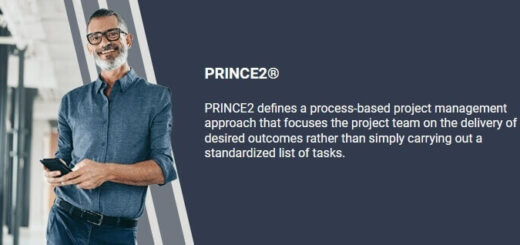How to Identify, Plan and Realize Project Benefits
 Projects are often considered completed and closed when established deliverables are achieved. However, the benefits of project are typically realized over time. That’s why realization of project benefits often gets lower importance, and nobody takes responsibility for identifying, planning and realizing benefits while these elements of project benefits management is critical to success. Below we give a list of steps to help you understand how to identify, plan and realize Benefits of your project initiative.
Projects are often considered completed and closed when established deliverables are achieved. However, the benefits of project are typically realized over time. That’s why realization of project benefits often gets lower importance, and nobody takes responsibility for identifying, planning and realizing benefits while these elements of project benefits management is critical to success. Below we give a list of steps to help you understand how to identify, plan and realize Benefits of your project initiative.
Identifying: The Structure of Project Benefits
The first step to identify project benefits is to create a structure that declares how the benefits should be established, organized and linked to each other. The structure will classify types of benefits and refer to current project goals and deliverables. For example, when identifying project benefits, the structure can refer to the following goals/deliverables:
- Improvement of support services, business processes, staff productivity, or efficiency as a whole
- Reduction or minimization of costs
- Increase in sales and generation of higher revenue
- Achievement of higher staff morale and better motivation
According to these goals/deliverables, potential benefits are to be identified and listed. However, the benefits should be presented not just as a simple list of what are expected but they should have interdependencies and consecution to let project participants (stakeholders) understand where fulfilment of one benefit is dependent on the realization of another one.
Planning: The Benefits Realization Plan
As soon as benefits have been identified, organized and structured, your next step is to design the benefits realization plan. This step also covers management actions required to maintain and execute such a plan.
The benefits realization plan usually serves as a summary of the main milestones where each benefit has a detailed description (a benefit profile). It helps ensure all anticipated benefits are effectively established and actively managed. Being a management tool to monitor, control and manage current benefits, the benefits realization plan entails such key activities as measurement, evaluation, processing, reporting, and implementation to draw all benefits together and form a collective set of benefits. This set will serve as a centralized source of information to help track what needs to be done and to manage successful achievement of benefits.
Realizing: The Benefits Management Team
Development, maintenance and implementation of the benefits realization plan is entrusted to management workgroup or team which consists of the project manager and some team members. Monitoring and measurement of the benefits realization plan is the basic responsibility of the benefit owners (1. the operational benefit owner who cares for current activities of the workgroup; 2. the senior benefit owner who oversees the total progress of the realization plan). The owners use benefits profiles as a starting point to monitor and measure the realization of benefits.
As a rule, most of the expected benefits will not start realizing until current project is finished. It is essential for understanding how the benefits management workgroup performs, and that the benefits realization plan is maintained beyond project completion to accomplishment and realization.
After successful completion of the benefit realization plan team provides the owners with the following information:
- A report on the main activities undertaken and the milestones met
- A review of the collective set of project benefits
- A list of profiles where every benefit is marker as “Realized” or “Not Realized”
- A post-implementation review
The benefit owner uses this information to conduct analysis and make proper evaluation of the realized benefits against the original project goals and requirements.














